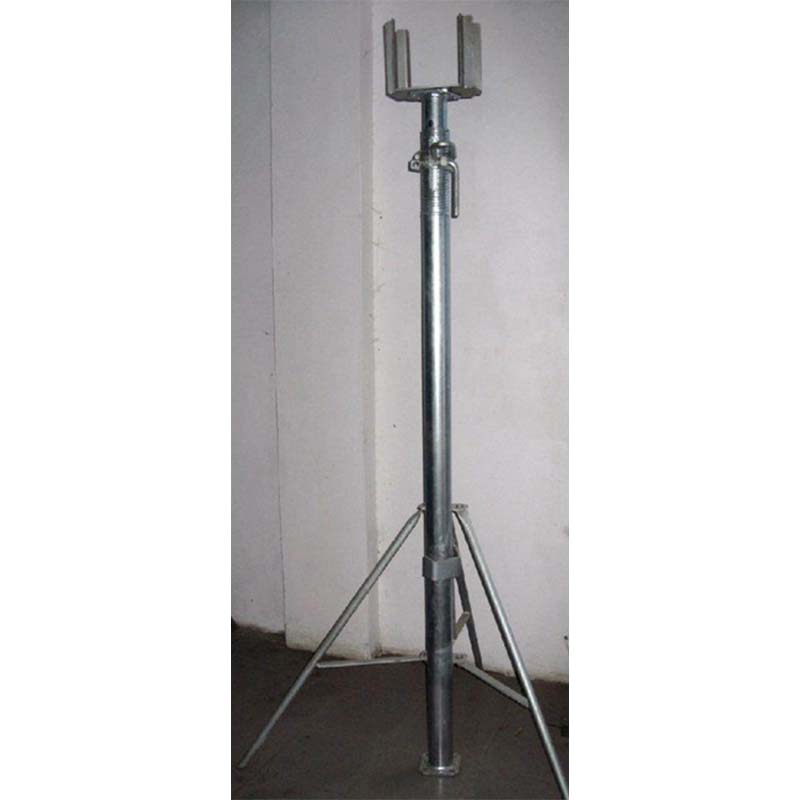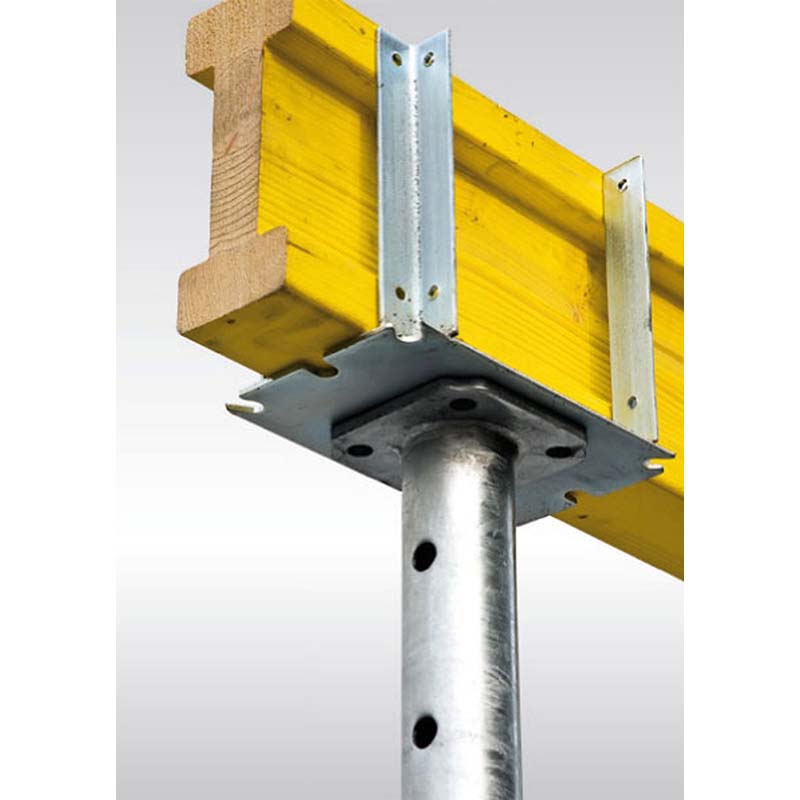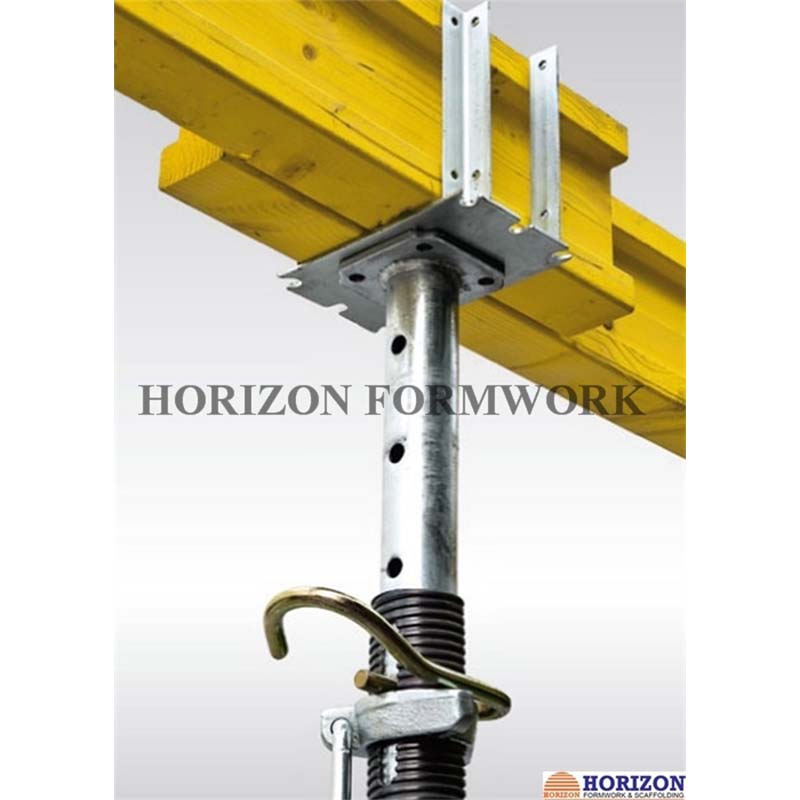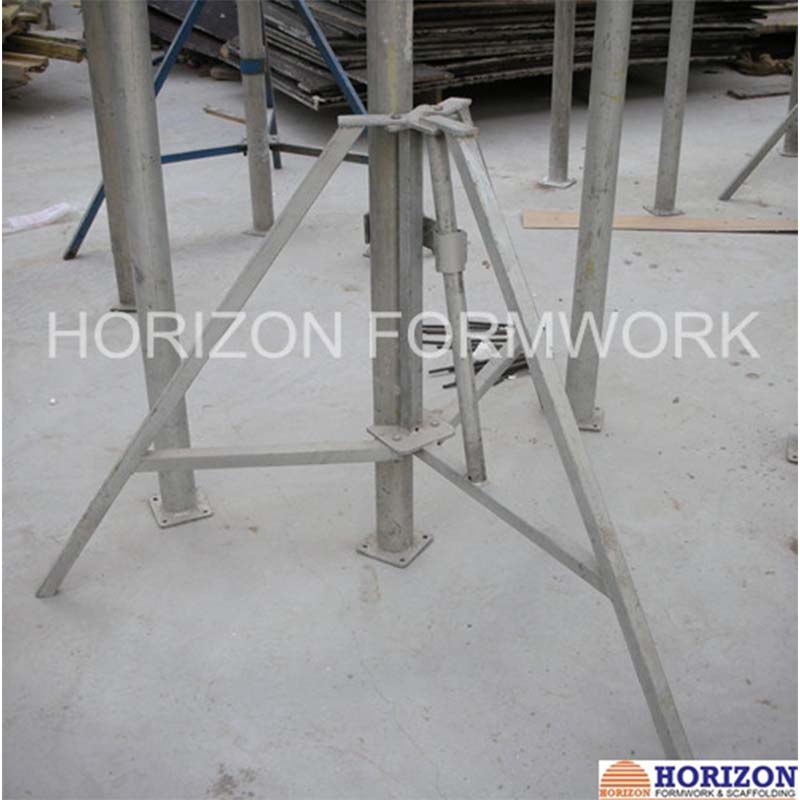Th8 . 07, 2025 02:20 Back to list
Steel Prop with Tripod & Fork Head | Stable Support Solutions
Industry Trends and the Demand for Robust Support Systems
The global construction industry is experiencing unprecedented growth, driven by rapid urbanization, infrastructure development, and an increasing focus on sustainable building practices. This expansion inherently escalates the demand for reliable, efficient, and safe formwork support systems. Among these, the prop with tripod, often complemented by a fork head, stands out as a fundamental component. Its adaptability and load-bearing capabilities are critical for ensuring the stability and integrity of structures during the crucial concrete curing phase. Industry trends point towards a growing preference for modular, reusable, and high-strength formwork solutions that minimize material waste and enhance on-site safety. According to a report by Grand View Research, the global construction equipment market size was valued at USD 184.2 billion in 2021 and is expected to expand at a compound annual growth rate (CAGR) of 6.2% from 2022 to 2030, indicating a sustained need for robust supporting elements like the prop with tripod.
The integration of advanced materials and manufacturing techniques is also a key trend, leading to lighter yet stronger components. For instance, the use of high-grade steel for a steel prop with tripod significantly improves its strength-to-weight ratio, facilitating easier handling and transportation without compromising safety or load capacity. Furthermore, stringent safety regulations and an emphasis on reducing construction timelines are pushing manufacturers to innovate, offering solutions that are quick to erect, dismantle, and maintain.
Understanding Tripod & Fork Head: Technical Parameters and Specifications
The combination of a prop, tripod, and fork head creates a highly stable and versatile support system for formwork. A "prop" (or "shoring prop") is essentially an adjustable vertical support, while the "tripod" provides a stable, wide base, and the "fork head" securely cradles the formwork beams (like timber or steel). Together, they ensure precise alignment and robust support for concrete slabs, beams, and other structural elements during construction.
Our product, the Tripod & Fork Head, available at https://www.horizonform.com/tripod-fork-head.html, is engineered to meet diverse construction demands. Key technical parameters are crucial for selecting the right system for a project. Below is a detailed specification table for typical prop with tripod components, representing industry standards and our product capabilities:
| Parameter | Prop (Shoring Post) | Tripod | Fork Head (U-Head) |
|---|---|---|---|
| Material | High-strength Steel (e.g., Q235, Q345) | High-strength Steel (e.g., Q235) | High-strength Steel (e.g., Q235) |
| Outer Tube Diameter | Ø48.3mm / Ø60.3mm (Common) | Foldable Legs, Tube Ø30-40mm | Plate Thickness 4-6mm |
| Inner Tube Diameter | Ø40mm / Ø48mm (Common) | N/A | N/A |
| Adjustable Height Range | 1.7m - 5.5m (Various Models) | N/A | N/A |
| Load Capacity (kN) | 20kN - 50kN (Depending on Extension) | Supports Prop up to 50kN | Supports Beam Loads up to 50kN |
| Surface Finish | Hot-dip Galvanized, Powder Coated, Painted | Painted, Galvanized | Painted, Galvanized |
| Weight (Approx.) | 8kg - 25kg (Varies with size) | 6kg - 8kg | 1.5kg - 2.5kg |
| Base Plate/Head Plate Size | 120x120mm / 150x150mm | Leg Span up to 1m (deployed) | 150x150mm to 200x200mm (or U-shape) |
| Standards Compliance | EN 1065, BS 4074, AS 3610-1995 | General Construction Standards | General Construction Standards |
These specifications highlight the robustness and versatility. For instance, a steel prop with tripod is typically manufactured from high-grade carbon steel, ensuring high yield strength and ultimate tensile strength, which directly translates to its superior load-bearing capacity. The adjustability allows for precise height alignment, crucial for creating level concrete slabs. Surface finishes like hot-dip galvanization are key for extending the product's service life, especially in harsh construction environments, providing excellent corrosion resistance and reducing maintenance needs.
Unveiling the Manufacturing Excellence of Prop with Tripod
The reliability of a prop with tripod hinges significantly on its manufacturing precision and the quality of its components. At Horizon Form, we pride ourselves on a rigorous manufacturing process that adheres to international standards like ISO 9001:2015 for quality management, ensuring every product, from a single prop with fork head to a comprehensive support system, meets the highest benchmarks.
Process Flow of Prop with Tripod Manufacturing:
- Material Selection & Preparation:
Step 1: Raw Material Sourcing. We source high-strength steel (e.g., Q235, Q345 for props; specific grades for fork heads and tripods) from certified suppliers, ensuring chemical composition and mechanical properties meet stringent requirements. This is crucial for the load-bearing capacity and durability of the steel prop with tripod.
Step 2: Cutting. Steel pipes for inner and outer tubes, and plates for base plates, head plates, and tripod legs are cut to precise dimensions using automated cutting machines, minimizing material waste.
- Forming & Machining:
Step 3: Tube Forming & Piercing. Outer tubes undergo roll-forming and welding (if not seamless), followed by precise piercing for adjustment pinholes. Inner tubes are prepared with threads for the adjustment nut. The prop with fork head often utilizes specialized forming for the head component.
Step 4: Plate Stamping & Bending. Base plates and head plates are stamped or laser-cut and then precisely bent, ensuring flat surfaces for maximum contact and stability. Tripod legs are formed to allow for folding and robust connection.
Step 5: Casting/Forging for Critical Components (Optional). For certain high-load capacity props or specialized fork head on prop designs, critical components like adjustment nuts or specific head types may undergo casting or forging processes for superior strength and durability. While our standard products are high-quality welded steel, specialized solutions might incorporate these methods.
- Welding & Assembly:
Step 6: Welding. Robotic or skilled manual welding (MIG/MAG) is used to attach base plates, head plates, and other components to the prop tubes, and to assemble the tripod structure. Welding quality is paramount; all welds undergo visual inspection, and samples are subjected to destructive testing to verify strength and integrity. Adherence to standards like AWS D1.1 is maintained.
- Surface Treatment:
Step 7: Cleaning & Preparation. Components are thoroughly cleaned to remove oil, rust, and scale, preparing them for surface treatment.
Step 8: Surface Finish Application. The most common finishes are hot-dip galvanization for superior corrosion resistance (extending service life to 10+ years even in harsh environments), powder coating for a durable and aesthetically pleasing finish, or simple painting. This process is vital for protecting the prop with tripod from environmental degradation, especially for a prop with fork head exporter serving diverse climates.
- Quality Control & Testing:
Step 9: Dimensional Inspection. Each component is checked for accurate dimensions, hole alignment, and thread quality.
Step 10: Load Testing. Random samples of assembled props are subjected to rigorous load testing in specialized hydraulic presses to verify their rated load capacity and stability under various extension levels, conforming to standards such as EN 1065 for steel adjustable props. This ensures every prop with tripod can reliably support its stated maximum load.
Step 11: Visual & Functional Inspection. Final products are visually inspected for defects, proper assembly, and smooth operation of the adjustment mechanism.
- Packaging & Dispatch:
Step 12: Packaging. Products are bundled or palletized securely for transport, minimizing damage during transit.
Our commitment to quality extends to the choice of materials and the implementation of advanced manufacturing processes. The high-grade steel used ensures superior strength and longevity, making our products ideal for repetitive use in demanding construction environments. This meticulous process ensures a long service life, typically exceeding 15 years with proper maintenance, significantly reducing replacement costs for our clients.

Technical Advantages and Application Scenarios
The prop with tripod offers a suite of technical advantages that make it indispensable in modern construction:
- Unparalleled Stability: The tripod base provides a wide, stable footprint, preventing tipping and ensuring uniform load distribution, especially critical for high-rise concrete pours. This is a significant advantage over simple base plates.
- High Load-Bearing Capacity: Manufactured from robust steel, these props can withstand substantial axial and eccentric loads, supporting heavy concrete slabs and beams safely. Our products are tested to ensure they meet or exceed specified load ratings, crucial for client safety and project integrity.
- Precise Adjustability: The telescopic design with fine adjustment mechanisms (e.g., external thread and cast steel nut) allows for accurate height setting, ensuring level and plumb formwork surfaces, which is vital for the structural integrity of the final concrete element.
- Durability and Longevity: With hot-dip galvanized or high-quality powder-coated finishes, our prop with tripod units are highly resistant to corrosion, rust, and wear, extending their service life and reducing long-term costs. This anti-corrosion feature is particularly beneficial in humid or chemically aggressive environments, typical in civil engineering or industrial construction.
- Enhanced Safety: The secure locking pin mechanism prevents accidental slippage, while the robust construction minimizes deflection under load, contributing significantly to on-site worker safety. This is a critical factor for any steel prop with tripod manufacturer.
- Ease of Installation and Dismantling: Despite their strength, these systems are designed for quick and efficient setup and removal, reducing labor time and costs. The foldable nature of the tripod simplifies transport and storage.
- Cost-Effectiveness: Their reusability across multiple projects and long service life translates into a lower overall cost of ownership compared to single-use or less durable alternatives. This also aligns with sustainable construction practices, reducing material waste.
Typical Application Scenarios:
The versatility of the prop with tripod makes it suitable for a wide array of applications across various industries:
- Building Construction: Indispensable for supporting slab formwork, beam formwork, and falsework in residential, commercial, and industrial buildings. It's the backbone for forming concrete floors at various heights.
- Bridge and Tunnel Construction: Provides crucial temporary support for casting large concrete sections, arches, and deck slabs where immense loads are involved.
- Infrastructure Projects: Used in metro lines, flyovers, and large-scale public utility constructions requiring robust and adjustable shoring.
- Specialized Industrial Applications: While primarily used in construction, their robust support capabilities also find use in industrial settings for temporary support during heavy machinery installation or maintenance, pipe rack construction (e.g., in petrochemical or power plants), and general shoring needs. In these scenarios, their high load capacity and anti-corrosion properties are particularly valued.
- Renovation and Demolition: Provides temporary structural support during interior demolition or renovation work where existing structural elements are altered or replaced.
For example, in a multi-story building project, the prop with tripod assembly ensures that each concrete slab is poured and cured perfectly level, allowing for subsequent floors to be built upon a stable foundation. Its reusability across floors and projects significantly contributes to overall project efficiency and cost savings.

Choosing Your Partner: Manufacturer Comparison and Customization Solutions
Selecting the right prop with tripod manufacturer is paramount for project success, safety, and long-term cost efficiency. The market for formwork support systems includes numerous steel prop with tripod manufacturers, prop with fork head factories, and fork head on prop suppliers, but not all offer the same level of quality, reliability, or service.
Key Factors for Manufacturer Comparison:
- Quality Certifications: Look for manufacturers with internationally recognized certifications like ISO 9001:2015, which indicates a robust quality management system. Compliance with specific product standards (e.g., EN 1065 for props, ASTM for materials) is also crucial.
- Experience and Track Record: A company with extensive experience in the industry, like Horizon Form's long service years, often translates to deeper expertise in product design, manufacturing, and problem-solving. Review their past projects and client testimonials.
- R&D and Innovation: Leading manufacturers continuously invest in research and development to improve product performance, durability, and ease of use. This might involve new material alloys, improved surface treatments, or ergonomic designs.
- Customer Support and Technical Assistance: A reliable supplier should offer comprehensive pre-sales consultation, technical guidance during installation, and efficient after-sales support. This includes providing detailed technical drawings and usage guidelines.
- Customization Capabilities: Not all projects are standard. The ability of a prop with fork head companies to offer tailored solutions is a significant advantage.
Horizon Form's Customization Solutions:
As a leading prop with fork head manufacturer and fork head on prop supplier, Horizon Form understands that every construction project has unique requirements. We specialize in providing bespoke solutions for your prop with tripod needs:
- Tailored Lengths and Load Capacities: Beyond our standard range, we can manufacture props to specific extended lengths and engineer them to achieve higher or lower load capacities, perfectly matching your structural demands.
- Specialized Surface Finishes: While hot-dip galvanization is our standard for maximum protection, we can apply specific coatings for extremely corrosive environments (e.g., marine construction, chemical plants) or for unique aesthetic requirements.
- Custom Head and Base Designs: We can design and manufacture custom fork head on prop configurations, specialized base plates, or other attachments to seamlessly integrate with your existing formwork systems or non-standard beam types. This flexibility makes us a preferred prop with fork head supplier for complex projects.
- Material Variations: While steel is primary, for certain applications requiring extreme lightweighting or non-magnetic properties, we can explore alternative high-strength alloys in consultation with our engineering team.
- Branding and Packaging: For large orders, we offer customized branding on products and packaging solutions to meet specific logistical or marketing needs.
Our collaborative approach, from initial consultation to final delivery, ensures that your specific requirements are met with precision and efficiency. Our engineering team leverages years of experience to provide optimal, cost-effective, and safe solutions.

Application Cases and Customer Success Stories
Our commitment to quality and innovation has led to numerous successful collaborations with clients across diverse sectors. These application cases demonstrate the tangible benefits of using Horizon Form's prop with tripod systems.
Case Study 1: High-Rise Residential Complex, Urban Center
A major developer undertaking a 30-story residential tower required a shoring solution that offered both high load capacity and rapid deployment. Traditional timber shoring was proving too slow and resource-intensive. Horizon Form provided over 5,000 units of our steel prop with tripod, customized for extended height and treated with a durable powder coating for multiple reuses. Our client reported a 25% reduction in slab pouring cycle time due to the quick adjustability and secure setup of our props. Furthermore, the robust design of the prop with fork head minimized deflection, resulting in flatter concrete slabs and reduced need for corrective work, showcasing the product's superior performance.
Case Study 2: Industrial Plant Expansion, Coastal Region
For the expansion of a petrochemical plant in a highly corrosive coastal environment, durability was a primary concern. Standard painted props would quickly degrade. We supplied hot-dip galvanized prop with tripod systems designed to withstand saline air and chemical exposure. The client specifically highlighted the exceptional corrosion resistance, which ensured the integrity of the temporary supports throughout the project's extended timeline. This prevented costly delays and safety hazards associated with corroding equipment, reinforcing our reputation as a trusted prop with fork head exporter to challenging environments.
Case Study 3: Large-Span Bridge Deck Construction, Remote Area
A civil engineering firm constructing a bridge in a remote, mountainous region faced logistical challenges and needed highly reliable, yet easy-to-transport shoring. Our foldable prop with tripod units combined with standard props proved invaluable. Their compact storage and simple setup allowed for efficient transportation and erection on difficult terrains. The project manager praised the stability and load capacity of the system, which provided critical support for the heavy concrete pours of the bridge deck, demonstrating the versatility of our fork head on prop companies.
These cases exemplify our commitment to delivering high-quality, reliable, and adaptable prop with tripod solutions that contribute directly to our clients' success, safety, and operational efficiency. Our extensive experience, backed by glowing customer feedback, positions us as a leading prop with tripod companies.

Frequently Asked Questions (FAQ) about Prop with Tripod
Delivery, Warranty, and Customer Support
Horizon Form is committed to not only providing superior quality prop with tripod systems but also ensuring a seamless customer experience from order to delivery and beyond.
Delivery Cycle:
Our standard delivery cycle for stock items typically ranges from 1 to 2 weeks for domestic orders and 3 to 6 weeks for international shipments, depending on destination and volume. For customized orders, the lead time will be discussed and confirmed during the quotation phase, factoring in design, manufacturing complexity, and testing. We leverage efficient logistics networks and experienced freight partners to ensure timely and secure delivery of your prop with fork head exporter order, minimizing project delays.
Quality Assurance and Warranty:
Every prop with tripod from Horizon Form undergoes stringent quality control inspections at every stage of the manufacturing process. We offer a standard 1-year warranty on all our products against manufacturing defects, providing our clients with peace of mind and confidence in their investment. Our products are designed for durability and a long service life, and this warranty reflects our commitment to excellence.
Dedicated Customer Support:
Our expert customer support team is available to assist you with technical inquiries, product selection, order tracking, and any post-purchase support you may require. We believe in building long-term relationships with our clients, offering unparalleled service and technical expertise to ensure your projects run smoothly. Whether you're a first-time buyer or a returning partner, you can expect responsive and knowledgeable assistance from our fork head on prop companies.
For inquiries or to request a custom quote, please visit our product page: https://www.horizonform.com/tripod-fork-head.html.
Conclusion: Empowering Construction with Advanced Shoring Solutions
The prop with tripod, complemented by the versatile fork head, is more than just a support component; it is a critical enabler of safe, efficient, and cost-effective construction. Its robust design, precise adjustability, and inherent stability are indispensable for the successful execution of diverse projects, from residential buildings to complex infrastructure. As a leading steel prop with tripod manufacturer, Horizon Form is dedicated to pushing the boundaries of engineering excellence, delivering products that not only meet but exceed industry standards.
Our commitment to quality, backed by rigorous manufacturing processes, comprehensive testing, and a focus on customer-centric customization, ensures that every prop with fork head we produce contributes directly to the safety, efficiency, and longevity of your construction endeavors. By choosing Horizon Form, you are partnering with a prop with tripod companies that stands for reliability, innovation, and unwavering support.
"The adoption of advanced shoring techniques and high-quality, reusable components like adjustable steel props with stable bases is pivotal for enhancing site safety and economic viability in modern construction. These systems not only bear immense loads but also facilitate faster project completion times through their ease of erection and dismantling."
- From a discussion on "Temporary Works Design & Safety" by a leading industry forum.
ICE (Institution of Civil Engineers) - Temporary Works Briefing
"Research consistently demonstrates that the initial investment in high-quality, certified formwork support systems yields significant long-term savings through reduced material waste, lower labor costs, and enhanced safety, ultimately contributing to a project's overall profitability and sustainability."
- Excerpt from a study on "Optimizing Formwork Systems for Sustainable Construction" in a Civil Engineering Journal.
ASCE Library (American Society of Civil Engineers) (Specific article link not provided as it requires subscription/search, linking to library homepage)
This is the last article
-
Steel Prop with Tripod & Fork Head | Stable Support Solutions
NewsAug.07,2025
-
Premium H20 Timber Beams | Durable Structural Solutions
NewsAug.05,2025
-
Premium Wall Formwork Solutions for Modern Construction
NewsAug.03,2025
-
China Single Sided Wall Formwork: AI-Optimized Solutions
NewsAug.02,2025
-
Premium Timber Beam H20 | Strong & Durable Construction
NewsJul.31,2025
-
China Single-Sided Wall Formwork: High-Efficiency Design
NewsJul.31,2025